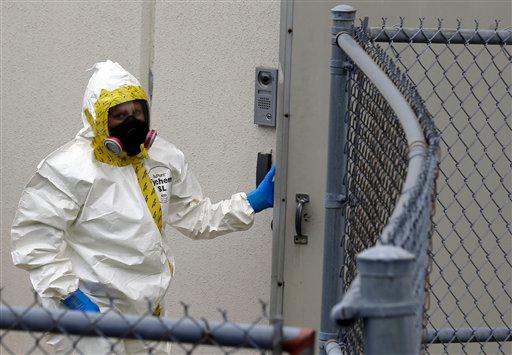A slew of state lawmakers have received suspicious letters containing white powder in recent months, including most recently in states such as Kansas and Tennessee, leading to buildings being evacuated and investigations being launched.
Several Republican leaders in Tennessee received letters containing a white powder substance last month, prompting a temporary lockdown of a legislative office building in Nashville. This followed an incident the week prior in Kansas, where around 100 letters containing a white powder were sent to lawmakers and public officials.
Experts in mailroom security have noticed an alarming increase in white powder threats targeting public figures, legislators, and organizations. The recent incidents highlight the growing trend of politicians in particular being targeted with the malicious attacks—which, fortunately, have been hoaxes so far.
Threatening Trend on Rise
The nature of the white powder can vary from harmful substances such as ricin or fentanyl to benign agents like flour or sugar, Will Plummer, a security expert and chief security officer at RaySecur, said in an interview with The Epoch Times.RaySecur provides security equipment and services designed to prevent letters and small packages sent through the mail from being used as a means for threats, intimidation, or terrorism.

Mr. Plummer said their services are used by governments, Fortune 500 and smaller companies, and have even been used for Supreme Court nominees prior to being confirmed.
Mr. Plummer, with an extensive background in military and bomb squad operations, noted the rise in white powder threats over the past 30 days has been the highest volume he has witnessed in his four and a half years of monitoring this issue.
Prevalence in Politically Charged Environments
The recent wave of white powder threats has affected several states across the country. Mr. Plummer mentioned that Kansas, Oklahoma, Florida, Tennessee, Washington, D.C., Wyoming, and Montana have all been on the receiving end of the mailed threats in the most recent wave.While Mr. Plummer noted that these incidents do not necessarily indicate a specific trend or targeting pattern, he highlighted that there has been a historical tendency for threats to be more prevalent in politically charged environments, with both Democratic and Republican politicians having been targeted in the past.
The Task of Detection
Mr. Plummer also pointed out the challenge of detecting these threats, as they require specialized screening methods due to their inconspicuous nature. X-ray technology makes packages easier for investigators to find suspicious contents in, but letters and envelopes are not really screened before being delivered.The technology employed by RaySecur is similar to those at airports today, using terahertz to get a more complete image of what’s inside a package before it’s opened compared to an x-ray. He added the technology is a high frequency, but there is no radiation or ionization, so it is safe.
When asked about the substances typically found in these threats, Mr. Plummer revealed that many turn out to be benign, including substances like flour or caustic soda, which is used for industrial cleaning.

He also mentioned the use of irritants such as mustard powder and wasabi, explaining that the physical reaction these substances elicit often amplifies the perceived threat, even if the actual danger is minimal.
Mr. Plummer cautioned that law enforcement agencies face difficulties in tracing the origin of these threats, but emphasized that mailing items is not an anonymous act.
Fear and Financial Cost
Discussing the financial and operational implications of white powder threats, Mr. Plummer underlined the substantial costs associated with evacuations and emergency response efforts.He cited an example where an approximately 14-minute evacuation at a facility that he noted was “politically charged” cost a company $340,000, which included expenses related to loss of work hours, emergency response teams, and subsequent investigations.
Mr. Plummer stressed the importance of organizations implementing comprehensive screening programs to prevent and manage these threats effectively.
Mr. Plummer urged individuals who receive suspicious mail to exercise caution and treat it as potentially hazardous. He advised against opening any suspicious packages or envelopes and recommended using proper tools such as letter openers to minimize direct contact.
If a threat is suspected, Mr. Plummer advises calmly putting the item down, washing hands and face, and promptly reporting the incident to the authorities.
“This is more common than people think,” he said. “Mail is a heck of a way to really cause a lot of pain and discontent in an organization or people.”
With their potential to cause widespread panic, disruption, and financial strain, he emphasized the importance of raising awareness and implementing proactive measures to mitigate the risks associated with these threats.





